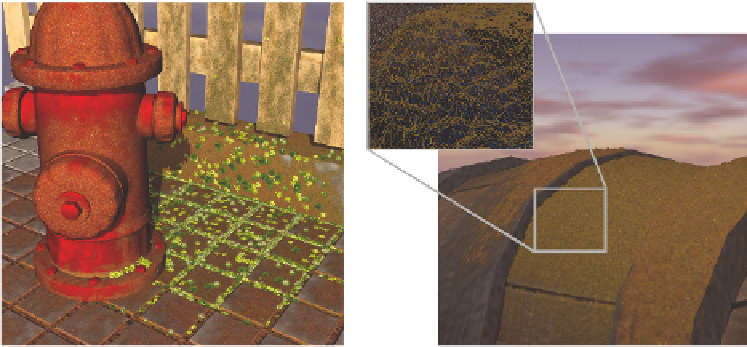Graphics Reference
In-Depth Information
3.4.1 Displaying Height
Tessellation shaders allow for adaptive subdivision of the surface geometry by
introducing two new shader stages after the vertex shader: a hull and a domain
shader. The hull shader is typically used to perform calculations for each control
point of a surface patch. In our case, both the vertex and hull shader by-pass po-
sitions, normals, and texture coordinates. The function
ConstantHS
in Listing 3.9
is executed once per control patch to compute the distance-dependent tessellation
factors. Based on these factors, a fixed-function tessellation engine subdivides the
patches. The domain shader is executed for each vertex of the refined mesh and
is used to interpolate properties from the control points, i.e., positions, normals,
tangents, and so on. Additionally, we apply a vertex displacement by the value
in the height map, which originates in the amount of material on the surface.
Eventually, the pixel shader shades the surface using normal mapping.
3.4.2 Displaying Lichen
To visualize the spread of lichen, we place and scale plantlet billboards according
to the concentration of organic material, shown in Figure 3.11. To maintain a
constant number of plantlets we randomly reseed them to adapt to the current
organic distribution in the scene. Thereby, each gammaton is responsible for one
plantlet, see function
plantletPlacement
in Listing 3.10, as called from the closest
hit program in Listing 3.3. For the billboards we expand the quads in view space
using a geometry shader.
Figure 3.11.
Depictions of the intermediate output. Left: plantlets distributed in
regions of high lichen growth. Right: Distance-dependent tessellation with displacement
mapping, depending on the amount of rust and organic material.
[Appeared in [Gunther
et al. 12] and reproduced by kind permission of the Eurographics Association.]









